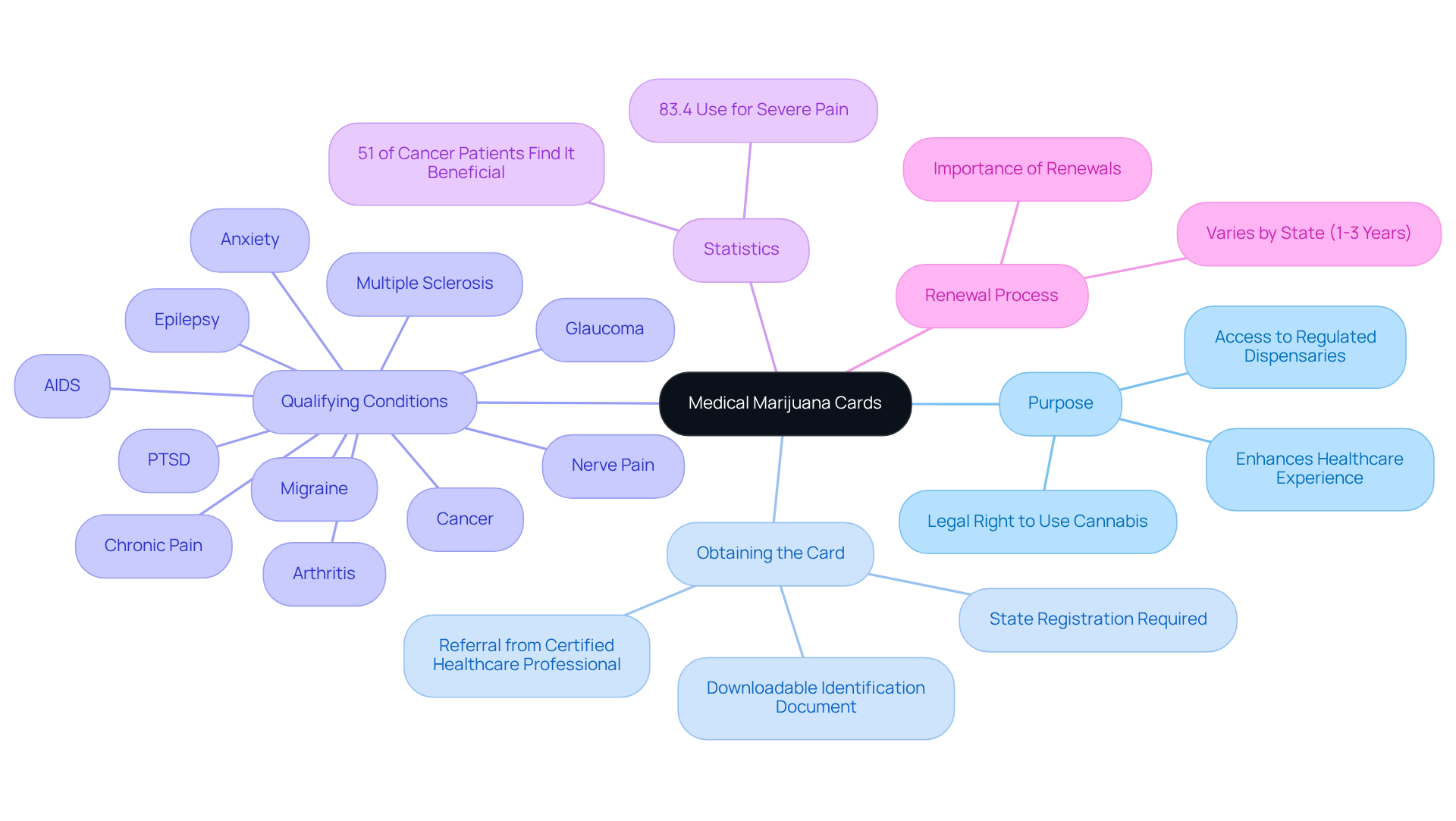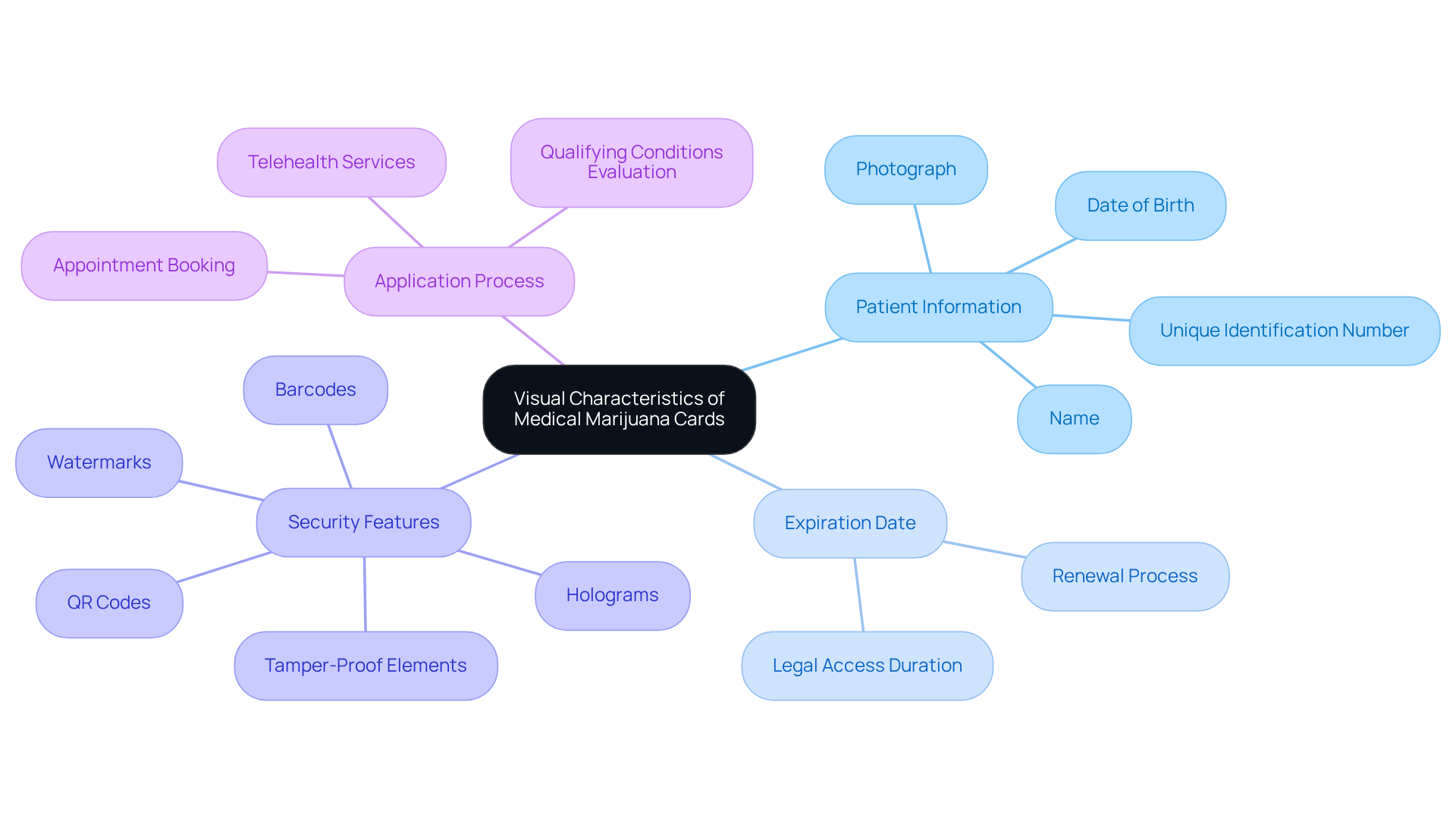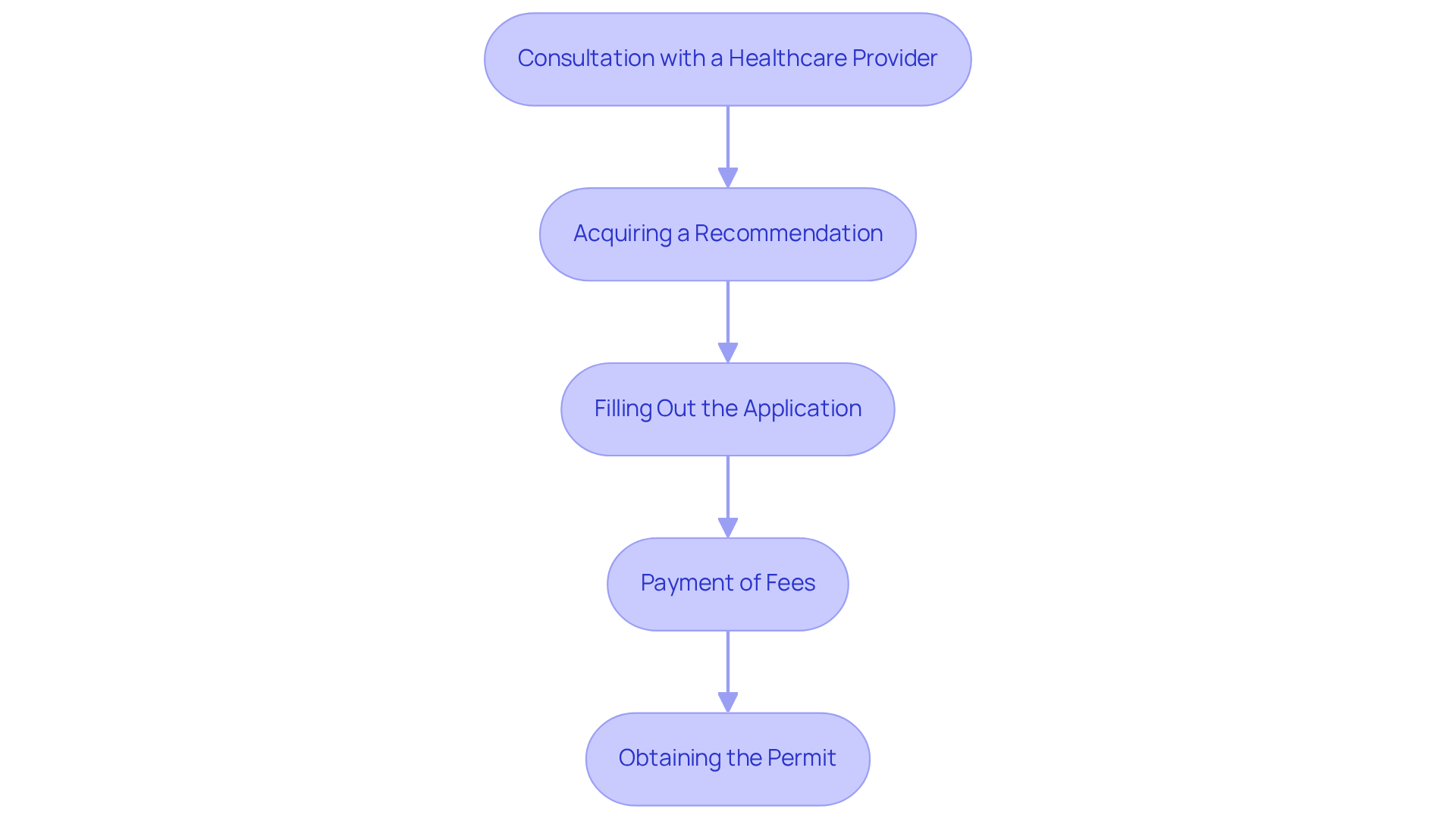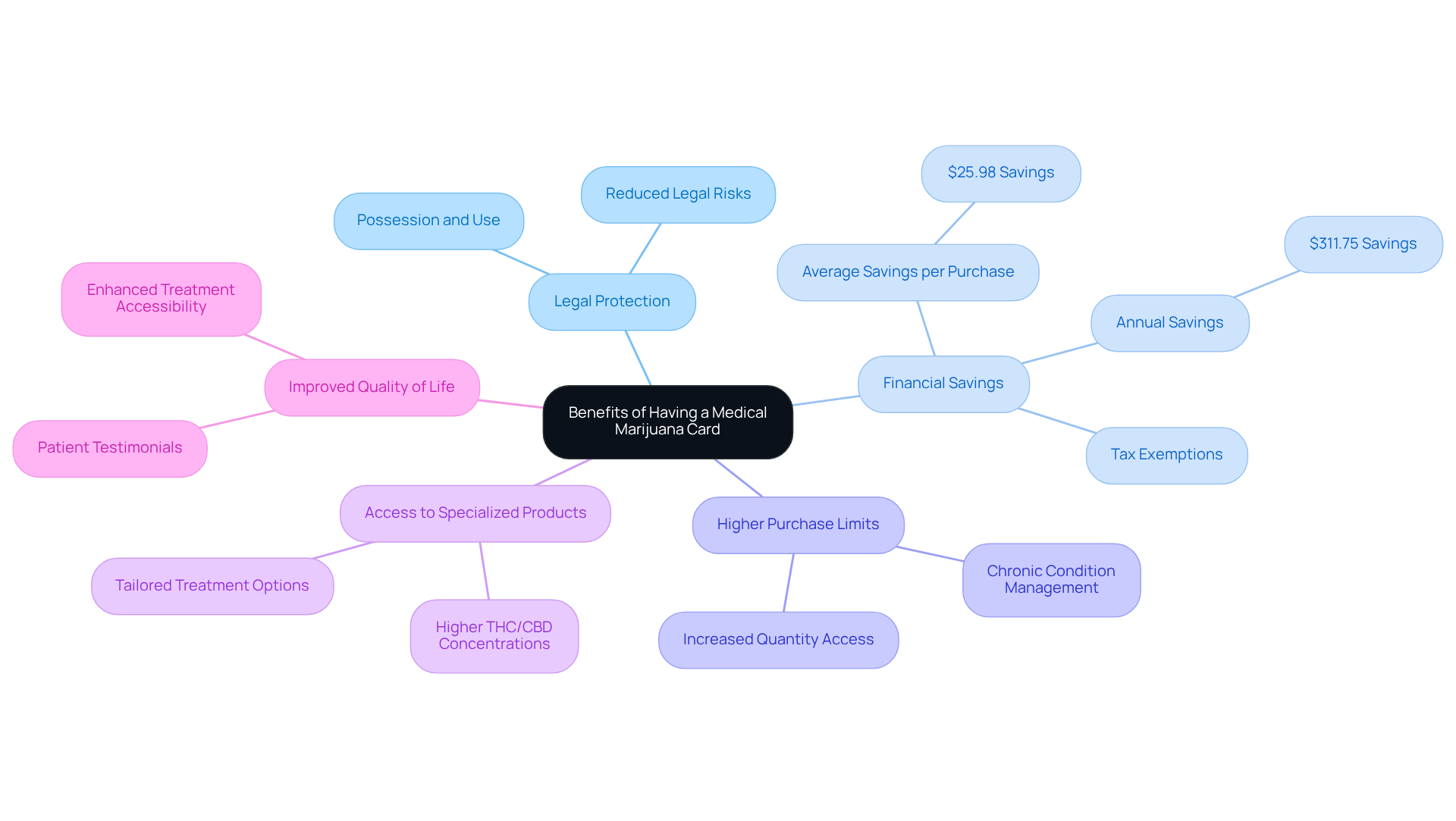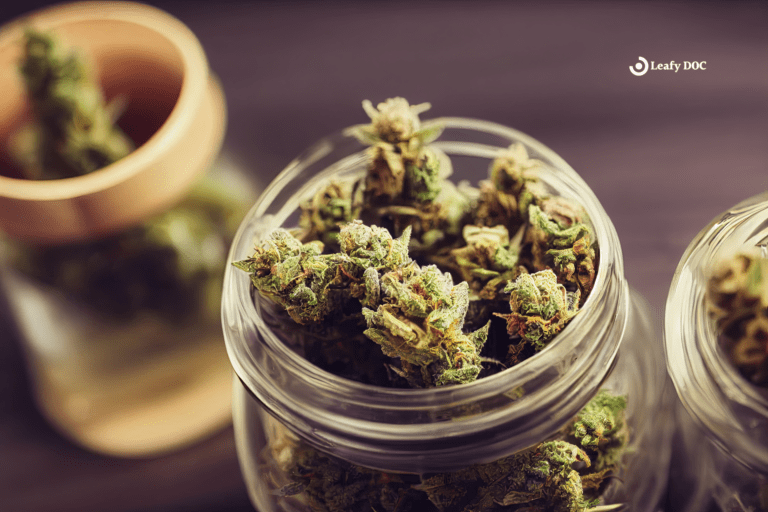What Do Medical Marijuana Cards Look Like? Key Features Explained
by Maya Green · September 24, 2025
Explore what do medical cards look like, including their key features and visual characteristics.
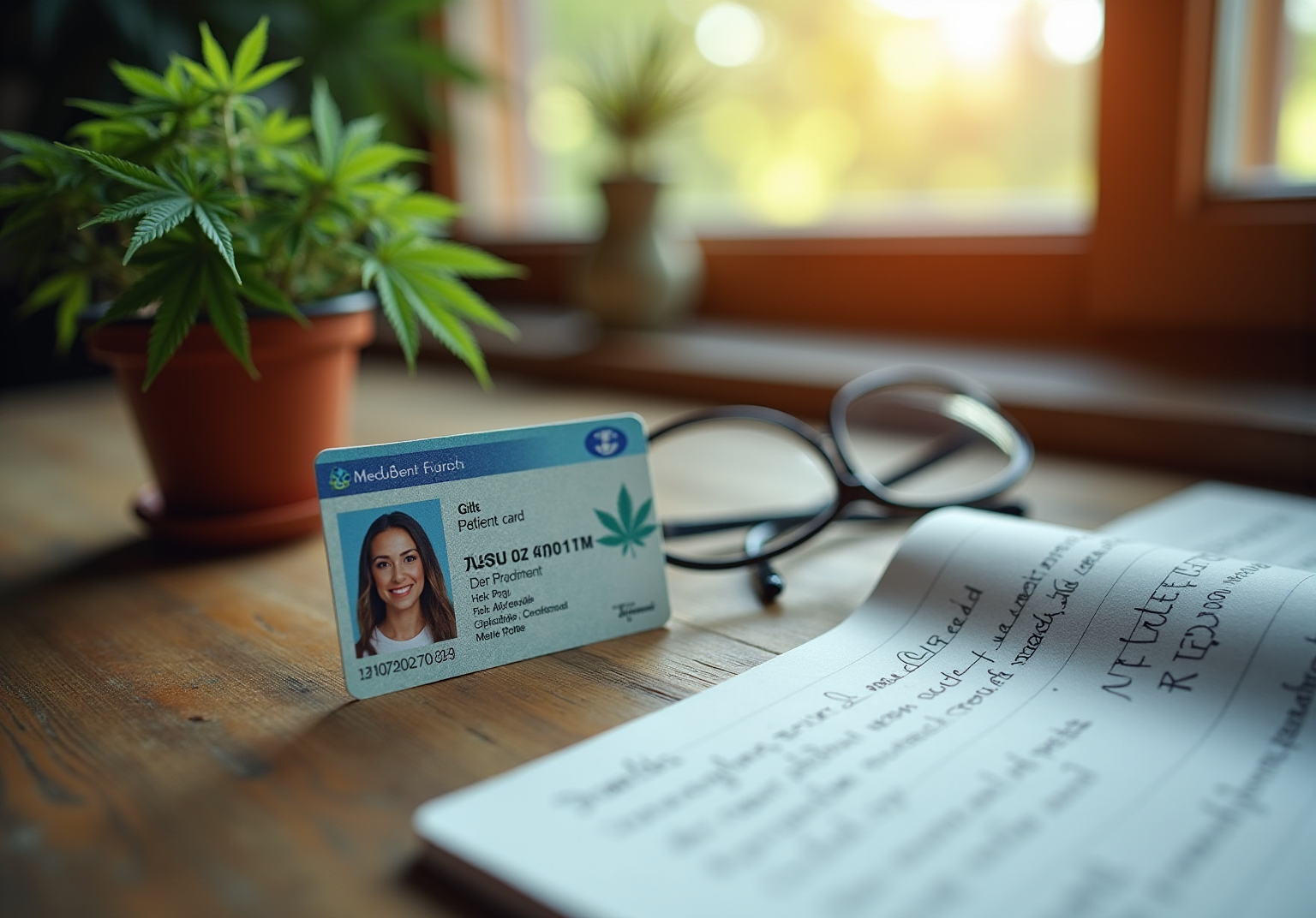
Medical marijuana cards are designed to look similar to standard identification documents, featuring important details such as the patient’s name, photograph, expiration date, and security elements like holograms. It’s important to remember that these cards are more than just identification; they serve as proof of eligibility for medical cannabis use. They also provide essential legal protections and access to regulated products, which can significantly enhance the therapeutic experience for individuals facing qualifying health conditions.
You may find that having a medical marijuana card can alleviate some of the struggles associated with managing health issues. These cards not only validate your need for treatment but also empower you with the rights and resources to access the care you deserve. Embracing this opportunity can be a positive step toward improving your well-being.
If you or someone you know is considering this path, take a moment to reflect on the potential benefits. Navigating health challenges can be daunting, but with the right support and resources, you can find relief and comfort. Remember, you are not alone in this journey, and there are options available to help you thrive.
Introduction
Understanding the visual characteristics and essential features of medical marijuana cards is crucial for patients seeking therapeutic relief. These cards not only serve as a gateway to regulated cannabis products but also provide legal protections and access to specialized treatments tailored to individual health needs. It’s important to remember that these cards are much more than just identification; they are a vital resource in your journey toward better health.
So, what exactly do these cards look like, and how do their design elements ensure authenticity and security? You may find that exploring the intricacies of medical marijuana cards reveals not just their appearance, but also the significant role they play in enhancing patient care and access to vital resources. By understanding these features, you empower yourself to navigate your healthcare options with confidence and clarity.
Define Medical Marijuana Cards: Purpose and Functionality
A cannabis authorization is more than just a piece of identification; it’s a lifeline for individuals facing qualifying health conditions, granting them the legal right to acquire and use cannabis for therapeutic purposes. These documents are essential, providing legal safeguards that enable access to regulated dispensaries where secure and verified cannabis products can be purchased. To obtain a cannabis use permit, individuals typically need a referral from a certified healthcare professional, who can confirm that cannabis may help alleviate their symptoms. This document not only serves as proof of eligibility but also enhances the overall healthcare experience by ensuring access to quality products.
Qualifying criteria for acquiring a cannabis authorization often include conditions such as:
- AIDS
- anxiety
- arthritis
- cancer
- chronic pain
- epilepsy
- glaucoma
- migraine
- multiple sclerosis
- nerve pain
- PTSD
It’s important to remember that each state has its own criteria for obtaining a health cannabis permit, and individuals may need to register with the state after receiving their physician’s certification. Once authorized, individuals can conveniently download their identification document via email or receive it through postal service. Statistics reveal that approximately 83.4% of individuals using therapeutic cannabis do so primarily for intense discomfort, underscoring the vital role these cards play in enhancing access to essential therapies. Additionally, a significant 51% of U.S. cancer patients report that cannabis is highly beneficial for managing their symptoms, highlighting its effectiveness for those in need of assistance.
Renewals for patient cannabis certifications vary by state, usually occurring every one to three years. Healthcare experts emphasize the importance of marijuana cards, noting that they facilitate a systematic approach to obtaining cannabis, ensuring individuals receive the appropriate support and care. This organized access is crucial, especially as the medical cannabis landscape continues to evolve, providing individuals with the confidence that they are choosing a safe and effective treatment option. Leafy DOC plays a significant role in this journey by connecting individuals with licensed doctors who can offer evaluations and recommendations tailored to their specific needs.
Visual Characteristics of Medical Marijuana Cards: Design and Features
Medical marijuana licenses are designed to demonstrate what do medical cards look like, as they resemble standard identification documents with various visual elements that enhance security and authenticity. It’s essential to understand these key characteristics:
- Patient Information: The front of the card prominently displays the patient’s name, photograph, date of birth, and a unique identification number. This information is vital for dispensary staff to verify the identity of the cardholder, ensuring a smooth experience. The issuing authority of identification documents typically showcases the logo or seal of the state or county health department that issued the document, which raises the question of what do medical cards look like in terms of legitimacy and trustworthiness.
- Expiration Date: Most items include an expiration date, which prompts the inquiry of what do medical cards look like, indicating when the holder must renew their certification to maintain legal access to cannabis, crucial for ongoing support. To combat counterfeiting, many medical marijuana documents incorporate advanced security features, which raises the question of what do medical cards look like, including elements such as holograms, barcodes, or QR codes that can be scanned for verification. Additionally, some items may feature tamper-proof elements or watermarks, further enhancing their security.
These visual traits not only assist individuals in recognizing their tokens but also aid dispensary personnel in ensuring adherence to state regulations, thus facilitating a more seamless buying experience by illustrating what do medical cards look like. You may find that acquiring a cannabis authorization usually entails a simple application procedure, often assisted by telehealth services like those provided by Leafy DOC. Patients can easily book appointments with licensed physicians who evaluate their qualifying conditions and provide recommendations via email. This streamlined method is essential for patients seeking legal access to cannabis, as it simplifies the registration process and enhances the overall experience.
It’s crucial to acknowledge that more than 25 states have established Medical Marijuana Programs since California’s 1996 Proposition 215, emphasizing the extensive acceptance of these certificates. Cardholders also benefit from legal protections that allow them to possess and use cannabis in accordance with state laws. As the landscape evolves, both physical and virtual cannabis identification documents are becoming prevalent, offering patients adaptable choices for obtaining their prescriptions. Remember, you are not alone in this journey; support is available, and taking these steps can lead to a more comfortable and empowered experience.
The Process of Obtaining a Medical Marijuana Card
Navigating the process of obtaining a medical marijuana card can feel overwhelming, especially if you’re unsure about what do medical cards look like, but it doesn’t have to be. Here are the key steps to help you along the way:
- Consultation with a Healthcare Provider: Your journey begins with a consultation with a licensed healthcare provider experienced in cannabis. With Leafy DOC, you can skip the long wait at the doctor’s office by arranging your mmj certification assessment from the comfort of your home. Just submit an intake form with a few personal details and an ID, and we’ll assist you in booking an on-demand telehealth appointment or scheduling a convenient time for later. Connect with the right doctor in just minutes and easily chat with your provider via phone call or video on your smartphone, computer, or tablet. Common qualifying conditions include chronic pain, anxiety, and PTSD, among others.
- Acquiring a Recommendation: If your healthcare practitioner believes that therapeutic cannabis could benefit you, they will provide a written recommendation. This important document is essential for your application process and will be sent to you via email after your consultation.
- Filling Out the Application: Next, you’ll need to complete an application form, which typically includes personal information, health history, and the recommendation from your healthcare provider. Depending on your state’s regulations, this form can be submitted online or in person.
- Payment of Fees: Most states require a fee when you submit your application. This fee can vary widely. For example, in Florida, the application fee for a cannabis physician license is $75, and the cost of cannabis services has recently decreased from $199 to $169.
- Obtaining the Permit: Once your application is processed and accepted, you will receive your marijuana permit, allowing you to legally purchase cannabis from authorized dispensaries. Generally, the entire process of obtaining a health card takes about 2-4 weeks, depending on your state.
Real-world examples highlight the efficiency of this process. Individuals using Leafy DOC’s telehealth services can connect with licensed doctors who will assess their qualifying conditions, address their questions and concerns, and provide guidance on cannabis use. Statistics show that as of early 2025, Florida had over 900,000 active users of cannabis for therapeutic purposes, reflecting a growing acceptance of this treatment for various health issues.
It’s important to understand what do medical cards look like in your local regulations and requirements, as the timeframe for obtaining a permit can range from a few days to several weeks. By preparing properly—having all necessary documentation ready and ensuring that the information provided to the doctor matches your driver’s license and proof of residency—you can significantly speed up the process. Remember, you’re not alone in this journey; with the right support and information, you can navigate it successfully.
Benefits of Having a Medical Marijuana Card
Having a medical marijuana card can truly transform the lives of patients, offering several significant benefits that are worth exploring together:
- Legal Protection: As a cardholder, you gain legal protection to possess and use cannabis for medicinal purposes. This crucial safeguard significantly reduces the risk of legal repercussions, especially for those who rely on cannabis for therapy. It’s important to remember that recreational users must be 21 or older to buy legal weed, making this protection even more vital for those in need.
With a medical cannabis card, you can acquire cannabis from authorized dispensaries, which raises the question of what do medical cards look like. This ensures that you receive safe, tested, and regulated products, which is essential for anyone seeking reliable treatment options. Many individuals have shared how Leafy DOC has enabled them to access expert guidance and support from the comfort of their homes, making it easier to find quality products.
In many states, having a medical cannabis card, which raises the question of what do medical cards look like, can lead to substantial savings compared to recreational users. For instance, individuals can save an average of $25.98 per purchase, resulting in yearly savings of roughly $311.75. This financial advantage is particularly important for those managing chronic conditions. Patients like Robert H. have expressed how Leafy DOC saved them time and ensured a smooth process, making treatment more affordable and accessible.
Higher purchase limits for medical marijuana consumers may raise the question of what do medical cards look like, as they often enjoy greater possession limits than recreational users, allowing for better access to their medication. While recreational users may face restrictions, therapeutic individuals can frequently acquire larger quantities, ensuring they have steady access to what they need. This is especially beneficial for those experiencing chronic pain or other conditions that require ongoing treatment.
Cardholders have access to a wider variety of specialized cannabis products, including those with higher concentrations of THC or CBD, tailored to their specific health needs, which makes one wonder what do medical cards look like. For example, healthcare dispensaries can offer edibles with elevated THC levels compared to recreational stores, helping you find the most effective remedy for your condition. Reviews from individuals like Sophia T. highlight how engaging with knowledgeable doctors via Leafy DOC enabled them to discover the best options for their health, enhancing their quality of life.
These advantages underscore the importance of marijuana cards in improving access to effective treatment choices, ultimately enhancing your quality of life. The experiences shared by Leafy DOC patients illustrate the transformative impact of medical cannabis, especially for those dealing with chronic pain, PTSD, and other serious health issues. Remember, you are not alone in this journey, and there are resources available to support you.
Conclusion
Medical marijuana cards are invaluable for individuals seeking therapeutic relief, offering not only legal access to cannabis but also a way to navigate the often complex healthcare landscape. These cards represent more than eligibility; they enhance the overall experience, ensuring that patients can obtain safe and regulated products tailored to their unique health needs.
In this article, we’ve explored the process of obtaining a medical marijuana card, emphasizing the importance of consultations with healthcare providers, the required documentation, and the many benefits that accompany cardholder status. It’s essential to recognize that these cards provide legal protection, financial savings, and access to a broader range of specialized cannabis products, ultimately enriching the quality of life for those with qualifying health conditions.
As we conclude, it’s crucial to understand the significance of medical marijuana cards in healthcare. The growing acceptance of medical cannabis underscores the importance of exploring your options and seeking the necessary support. By taking these steps, you can empower yourself on your journey toward improved health and well-being, ensuring you have access to the treatments that can truly make a difference in your life. Remember, you are not alone in this journey; support is available, and every step you take brings you closer to the relief you deserve.
Frequently Asked Questions
What is a medical marijuana card and its purpose?
A medical marijuana card is a legal document that allows individuals with qualifying health conditions to acquire and use cannabis for therapeutic purposes. It provides legal safeguards and enables access to regulated dispensaries for purchasing verified cannabis products.
What are the typical requirements to obtain a medical marijuana card?
To obtain a medical marijuana card, individuals usually need a referral from a certified healthcare professional who can confirm that cannabis may help alleviate their symptoms. After receiving this certification, individuals may need to register with their state.
What health conditions qualify for a medical marijuana card?
Qualifying conditions often include AIDS, anxiety, arthritis, cancer, chronic pain, epilepsy, glaucoma, migraine, multiple sclerosis, nerve pain, and PTSD. However, each state has its own criteria.
How do individuals receive their medical marijuana card after approval?
Once authorized, individuals can download their identification document via email or receive it through the postal service.
How often do patients need to renew their medical marijuana card?
Renewals for medical marijuana cards vary by state, typically occurring every one to three years.
What percentage of individuals use therapeutic cannabis for pain relief?
Approximately 83.4% of individuals using therapeutic cannabis do so primarily for intense discomfort.
How beneficial is cannabis for cancer patients?
A significant 51% of U.S. cancer patients report that cannabis is highly beneficial for managing their symptoms.
Why are medical marijuana cards considered important?
Medical marijuana cards facilitate a systematic approach to obtaining cannabis, ensuring individuals receive appropriate support and care, which is crucial as the medical cannabis landscape evolves.
How does Leafy DOC assist individuals in obtaining medical marijuana cards?
Leafy DOC connects individuals with licensed doctors who can offer evaluations and recommendations tailored to their specific needs regarding medical cannabis use.
Last Updated: September 29, 2025
Get Approved for Your Medical Marijuana Card in Minutes!

Get Your Medical Card
Connect with a licensed physician online in minutes
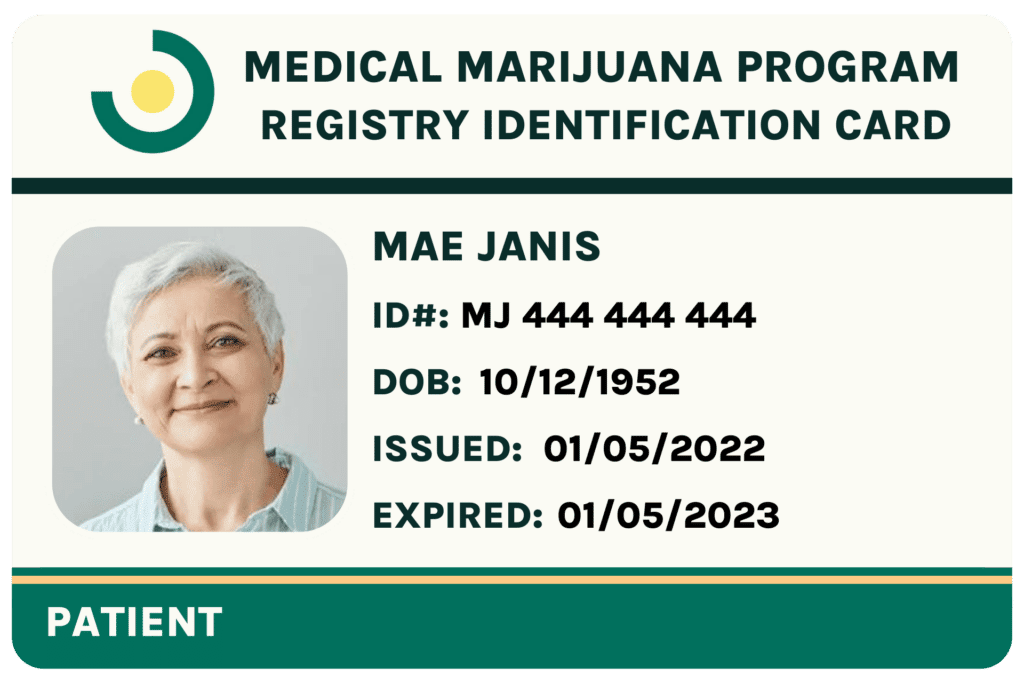
Like This Article?
Share with your friends
Table of Contents
Keep Reading
-
How Do I Get a Medical Marijuana Card in California?
If you’re a California resident interested in obtaining a medical marijuana card, read on for a step-by-step guide.
-
Navigating The Laws For Obtaining A Medical Marijuana Card
Unlock the benefits of medical marijuana legally with our ultimate guide to navigating the laws for obtaining a medical marijuana card. Don’t miss out on the hassle-free process – get your card now!
-
Understanding Cannabis Strain Genetics: Indica vs. Sativa vs. Hybrid
Explore the differences between indica, sativa, and hybrid cannabis strains and how they can be used for treatment. Learn about the unique properties of each strain and their effects on the body.

